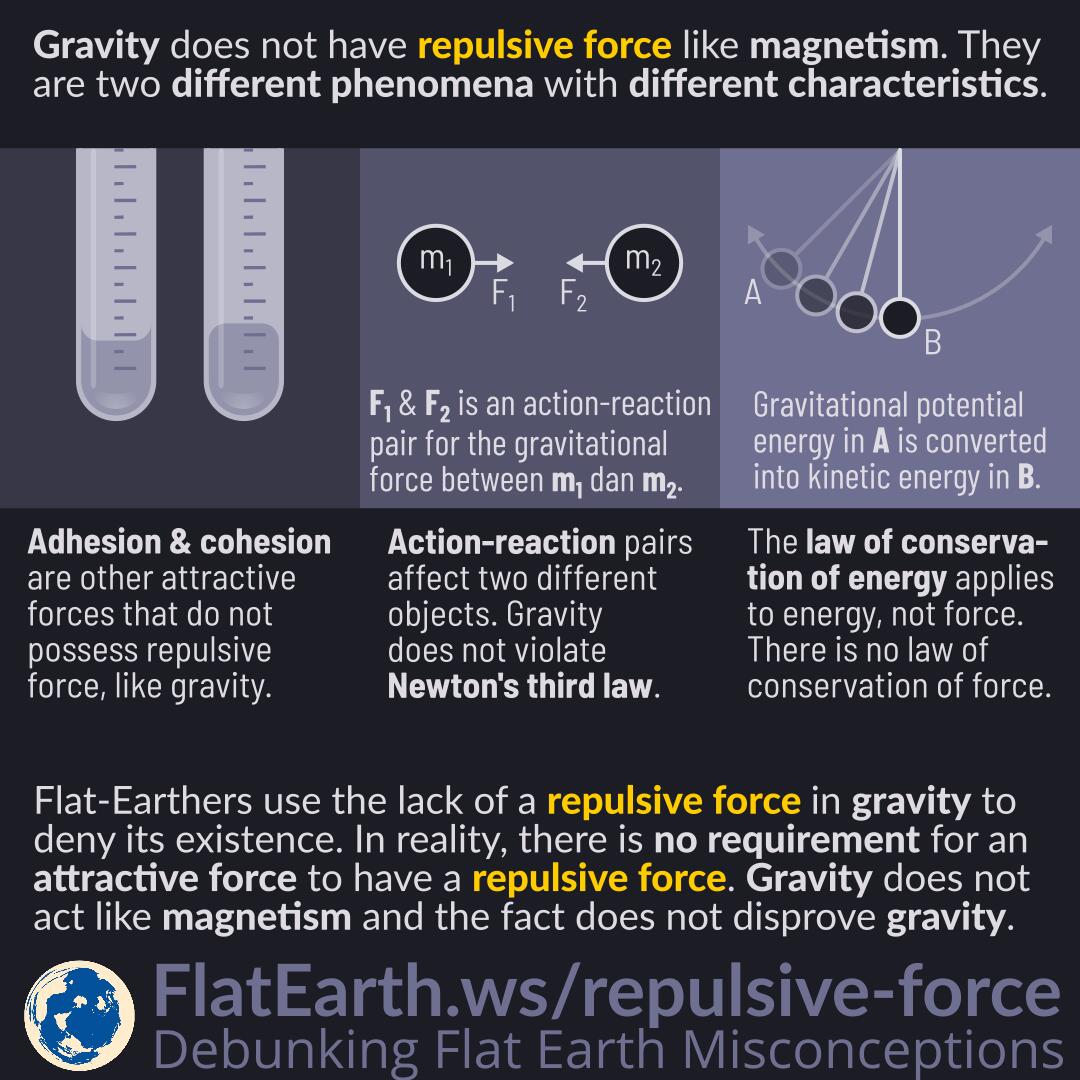Gravity does not possess repulsive force like magnetism. These are two different phenomena with different characteristics.
Flat-Earthers use the lack of a repulsive force in gravity to deny its existence. In reality, there is no requirement for an attractive force to have a repulsive force. Gravity does not act like magnetism, and the fact does not disprove gravity.
Flat-Earthers observe that magnets have both attractive and repulsive forces, and conclude that if a force is attractive, there must be the corresponding repulsive force. They use this invention of “scientific law” to reject gravity, which does not possess a repulsive force. However, there are adhesion and cohesion, which both are attractive forces that do not have the repulsive force, just like gravity. The score is now 3-1 for the phenomena that do not have repulsive force, and by the same “reasoning,” they should start questioning if magnets exist.
Some of them use Newton’s third law to justify the requirement for an attractive force to have repulsive force. In reality, the action and reaction pairs in Newton’s third law affect two different objects. If two objects are attracted to each other by gravity, then two equal forces affect both the objects by the same amount but having the opposite direction. Gravity does not violate Newton’s third law.
Others use the law of the conservation of energy to justify that a repulsive force must exist. However, the law of conservation of energy applies to energy, not force. There is no such thing as the law of conservation of force. In gravity, we have gravitational potential energy. A simple example of this is the pendulum. At the highest position, the weight has a maximum height and therefore having the maximum gravitational potential energy. As it falls lower, it converts the energy to accelerate the weight, turning it into the kinetic energy. As it goes back higher again, it converts the kinetic energy back again and turning it into gravitational potential energy. Again, gravity does not violate the law of conservation of energy.
References
- Adakah Gaya Tolak Bumi? – Kak Suata


